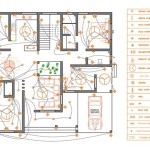The Sydney Opera House: A Case Study in Planning Fallacy
The Sydney Opera House stands as an iconic architectural marvel, gracing the harbor of Sydney, Australia. However, its construction was plagued by significant cost and time overruns, making it a prime example of the planning fallacy. This phenomenon, a cognitive bias, describes the tendency to underestimate the time, cost, and risks of future actions while overestimating the benefits. The Sydney Opera House project provides valuable insights into the mechanisms and implications of this pervasive bias.
Initially estimated to cost $7 million and be completed in 1963, the Opera House ultimately cost over $102 million and took 14 years to build, finally opening in 1973. This massive discrepancy between the initial projections and the final outcome highlights the core characteristics of the planning fallacy. The initial estimates were overly optimistic, failing to account for the complexities and unforeseen challenges inherent in such an ambitious project.
Several factors contributed to the planning fallacy in the Sydney Opera House project. One key element was the innovative and unprecedented nature of the design. Architect Jørn Utzon’s vision involved complex, never-before-attempted engineering feats, particularly concerning the iconic sail-like roof structure. The unfamiliarity with these construction techniques made accurate cost and time estimations extremely difficult.
Another contributing factor was the political pressure to commence construction quickly. The desire to begin the project and showcase its progress led to a rushed planning phase, potentially overlooking crucial details and realistic assessments. This pressure to start swiftly can often lead to inadequate contingency planning for unforeseen issues, exacerbating the effects of the planning fallacy.
Furthermore, the project experienced significant scope creep. Changes and additions to the original design were made throughout the construction process, adding to the costs and delaying the completion date. This evolving vision, while potentially contributing to the final masterpiece, exacerbated the existing planning challenges and further inflated the budget and timeline.
The fragmented nature of the project management also played a role. The division of responsibilities across various stakeholders created communication challenges and hindered efficient decision-making. This lack of centralized control made it difficult to track progress accurately and respond effectively to emerging problems, further contributing to the escalating costs and delays.
The Sydney Opera House case underscores the importance of recognizing and mitigating the planning fallacy in complex projects. Accurate and realistic planning requires meticulous analysis of all potential challenges, including unforeseen contingencies. This involves acknowledging the inherent uncertainties and incorporating buffer time and resources into the initial projections.
Thorough risk assessment is crucial. Identifying potential risks, both internal and external, allows for proactive mitigation strategies and realistic contingency plans. This proactive approach helps to minimize the impact of unexpected events and prevent them from derailing the project timeline and budget.
Effective communication and collaboration among all stakeholders are essential. Clear communication channels and well-defined roles and responsibilities facilitate effective problem-solving and decision-making. This collaborative approach ensures that everyone is working towards a shared understanding of the project scope, timeline, and budget.
Regular monitoring and evaluation of progress are also vital. Tracking key performance indicators and comparing them against the initial projections can help identify potential deviations early on. This allows for timely adjustments and corrective actions, minimizing the impact of the planning fallacy.
The Sydney Opera House project, while a triumph of architecture, serves as a cautionary tale about the pitfalls of the planning fallacy. Understanding the factors that contributed to its cost and time overruns provides valuable lessons for future projects. By implementing robust planning processes, incorporating risk assessment, fostering clear communication, and closely monitoring progress, organizations can strive to avoid the same fate and deliver projects within realistic timeframes and budgets.
The legacy of the Sydney Opera House project extends beyond its architectural brilliance. It serves as a constant reminder of the importance of rigorous planning and the pervasive nature of the planning fallacy. This understanding is essential for project managers, policymakers, and anyone involved in planning complex endeavors, ensuring that future projects are grounded in realistic expectations and delivered successfully.

Don T Fall For The Planning Fallacy Especially With Data Ysis O Neill School Undergraduate Thesis Blog

How To Write Around The Planning Fallacy

Fallacies Of Thinking No 4 The Planning Fallacy 42courses Com

The Planning Fallacy And Its Costly Consequences For Mega Construction Projects Contruent

The Biggest Mistake I See Leaders Make Planning Fallacy

How To Be A Better Planner Avoid The Planning Fallacy Life

Brain Biases The Planning Fallacy

Le Planning Fallacy 7about Fr

Cogblog A Cognitive Psychology Blog Under Budget And Over Time The Planning Fallacy Is Why You Re Always Behind Schedule

The Planning Fallacy And Its Costly Consequences For Mega Construction Projects Contruent








